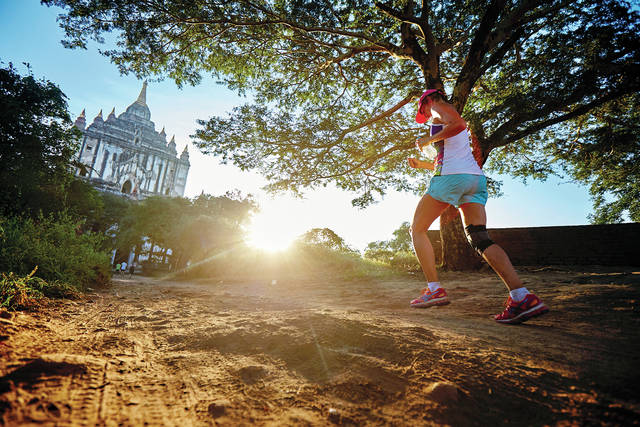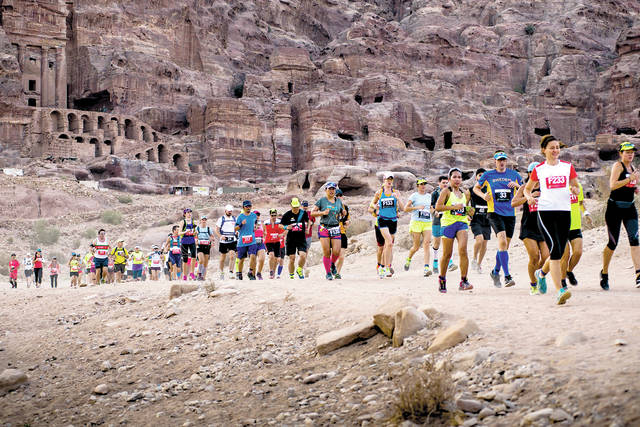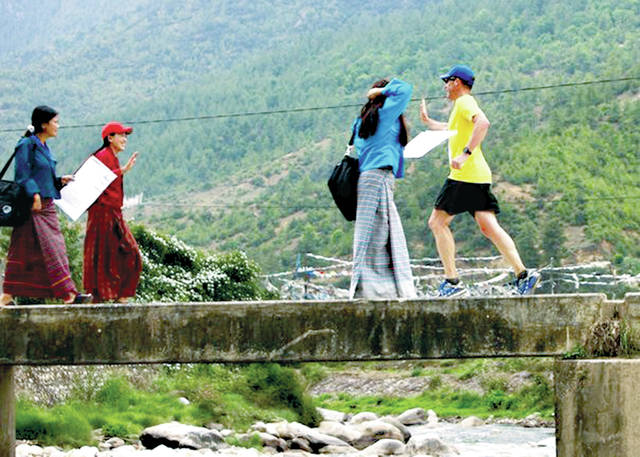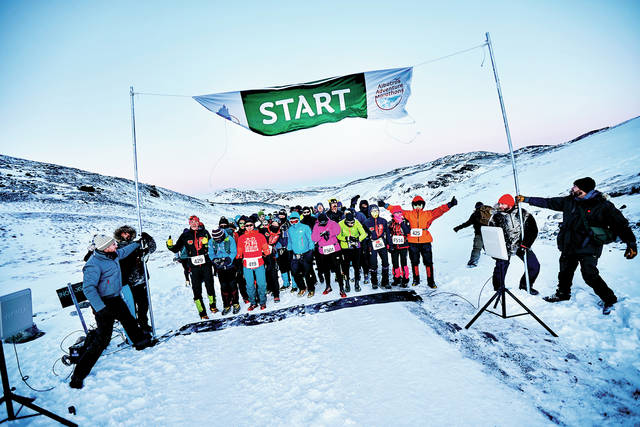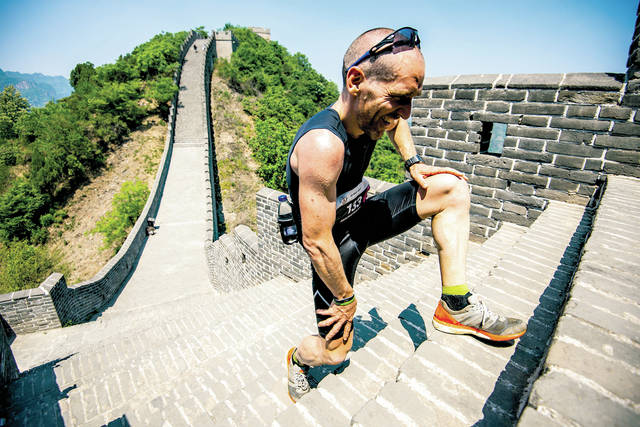Racing around the world: Exotic marathons for runners with wanderlust
Not many people can say they’ve been to all seven continents.
ADVERTISING
Far fewer can say they’ve run marathons in all of them.
Wendy Balthazor belongs to that elite club. It’s a membership that bestows bragging rights Balthazor couldn’t have imagined in 2011, as she milled about the start corrals of the Bank of America Chicago Marathon, waiting to embark on her first 26.2 mile run.
“I never wanted to do any marathons,” said Balthazor, 41, a grants and contracts specialist at the University of Illinois at Urbana-Champaign. “My best friend convinced me to run Chicago.”
Crossing that finish line made Balthazor a convert. The following year, she persuaded her friend to go to Australia to run a marathon that coincided with a solar eclipse.
“When we were down there, we got to talking to all of these international people who’d run all these great marathons all over the world,” Balthazor recalled. “I figured, ‘If I’m going to run one on this continent, why don’t I do one on every continent?’ ”
She began building her vacations around 26.2-mile races.
“That way I get to do two of my favorite things,” Balthazor said. “I get to travel, and I get to run, and I get to do them together.”
The opportunities to do just that have never been better. While the number of finishers in U.S. road races has trended downward slightly over the past three years, the number of organized races continues to climb. In 2016, there were 30,400 events across the country, an increase of 100 compared with the previous year, according to the most recent U.S. Road Race Trends report by Running USA. The same group’s 2016 National Runner Survey found that 26 percent of those polled were willing to travel outside of North America for a running event.
Long-distance runners with wanderlust pretty much sums up the client base for companies such as Marathon Tours & Travel, whose more exotic offerings include runs on the lemur-rich island of Madagascar, where most of the course cuts through a national park, and a two-week journey to Antarctica, where marathoners on King George Island might be joined by a few penguins waddling alongside them. (The popular trip is sold out through 2019.) The company also runs an eight-night excursion in Kenya, featuring game drives, bush walks and a marathon through a Maasai village — some of the proceeds help pay for girls to attend high school.
“The race is a catalyst to going somewhere, but when we get there, our clients want to have an authentic experience,” said Jeff Adams, who started as a Marathon Tours & Travel customer before taking over as president a little over a year ago.
The Massachusetts-based company sells group packages and individual travel arrangements for a growing portfolio of marathons, half-marathons and other running events near and far.
“Patagonia, Jerusalem, Cape Town and Bhutan will all be new offerings for us next year,” said Adams, a former Barrington resident who counts Chicago among the 20-plus marathons he’s finished.
“Chicago ends up being a gateway race to running the other majors,” he said, referring to the Abbott World Marathon Majors, a half-dozen of the most renowned long-distance races held annually in Chicago as well as Boston, New York, London, Berlin and Tokyo. “And once they’ve run the other majors, they go, ‘That was fun. Now what?’ ”
As just about any marathoner will tell you, “fun” isn’t always part of the experience. Balthazor’s most recent 26.2-mile race — the one that sealed her bid to bag all seven continents — followed the Inca Trail to Machu Picchu in Peru. The up-and-down terrain was both beautiful and brutal, with runners reaching an elevation of nearly 14,000 feet at the ominously named Dead Woman’s Pass, the highest point along the trail.
“Physically, it was the most difficult run of my life,” she said. “You do three mountain passes in the middle of a marathon, and the whole thing is basically stairs.”
It took her nearly 13 hours to finish, compared with the 4 hours and 12 minutes it took her to do Chicago.
Balthazor, who’s taken several trips with Marathon Tours & Travel, also has run the Great Wall Marathon in China and the Big Five in South Africa, where “they had rangers with guns on the course in case the animals got too close,” she said.
Some destination marathons skew more on the fun side than others, with France’s Medoc setting the bar — literally, with wine, at the water stations. Tipsy runners sporting elaborate costumes fuel up on fresh-shucked oysters and croissants as they make their way through Bordeaux wine country every September.
“I’ve done it twice it’s so much fun,” said Nick Bensen, president of the Oak Park (Ill.) Runners Club.
“Most marathon pre-race dinners are spaghetti, water and green salad,” Bensen said. “With this one, we went to a chateau and started with a cocktail hour before a gourmet dinner for 3,000 people. We got back to our hotel at 1 in the morning. The bus driver who dropped us off was like, ‘We’ll be back to pick you up in five hours.’ ”
Bensen, 55, typically runs a marathon in four hours or less. Both times, Medoc took over six.
“If you’re trying to run it fast, you’re missing the point,” he said.
For his international marathons, Bensen prefers traveling to Europe. He’s run a few in Italy, as well as London, Ireland, Paris, Stockholm and Athens, where the course begins near the town of Marathon, Greece. Runners follow in the legendary footsteps of Phidippides all the way to Athens, where they finish in the marble Panathenaic Stadium, home to the first modern Olympic Games in 1896.
Bensen’s wife, Geri, runs with him.
“We sort of combine vacations with marathons,” he said. “We run at the beginning of the trip and see the country afterward.”
The couple got married a few hours after finishing the Las Vegas Marathon, which they ran in bride and groom attire. Nearly a decade later, in 2011, they ran it again, renewing their vows along the way.
Bensen, who manages a diagnostic laboratory at Lurie Children’s Hospital in Chicago, has nearly 40 marathons under his belt. He has no plans to put away his running shoes — or passport.
“You can see so much of an area by running it,” he said.
“When you put that (bib) number on, you’re no longer a tourist,” he added. “You’re a participant.”


